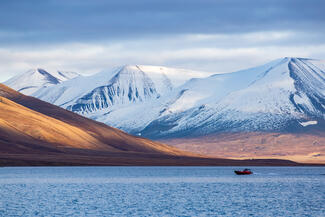The Norwegian Government is set to implement amended environmental regulations in Svalbard, introducing a significant shift for Arctic cruise tourism. These measures aim to preserve the unique wilderness and wildlife of one of Europe’s largest untouched areas by limiting how cruise lines operate in the region.
Impact on Arctic Cruising
The Svalbard archipelago, a significant attraction for nature lovers, has seen an increase in the number of expedition vessels visiting the area. These ships, carrying between 50 and 500 guests, offer a chance to explore one of Europe’s last untouched wilderness areas. However, the introduction of stringent measures from January 1, 2025, will limit the number of guests allowed ashore and impose restrictions on ship sizes, drastically altering the Arctic cruising experience.
New Measures and Their Implications
- Guest Limitations: Cruise ships visiting Svalbard will now be limited to 200 guests in protected areas to minimize human impact on the environment.
- Wildlife Viewing Restrictions: Regulations mandate a distance of at least 150 meters from walruses, significantly reducing close encounter opportunities for guests.
- Speed Limitations: Ships must maintain a 5-knot speed limit within 500 meters of land outside bird cliffs during the sensitive period from April 1 to August 31, restricting zodiac approaches and scenic cruising.
- Ban on Breaking Fast Ice: This measure protects the habitat of seals, polar bears, and walruses by restricting ships with ice class from entering areas with fast ice.
Preserving Svalbard’s Wilderness
The new regulations present challenges and opportunities for the cruise industry and its guests. While limitations may reduce the flexibility and scope of Arctic cruises, they encourage a more sustainable and respectful approach to exploring one of the planet’s last wilderness frontiers.
Andreas Bjelland Eriksen, the Norwegian Minister of Climate and Environment, emphasized the need for tighter environmental regulations in Svalbard to protect the flora and fauna from climate change and increased activity.
Despite concerns from the Association of Arctic Expedition Cruise Operators about the impact of these regulations, the shift could lead to a more exclusive and enriching experience for visitors. It may also encourage the development of smaller, eco-friendly ships designed for sensitive environments like Svalbard.


